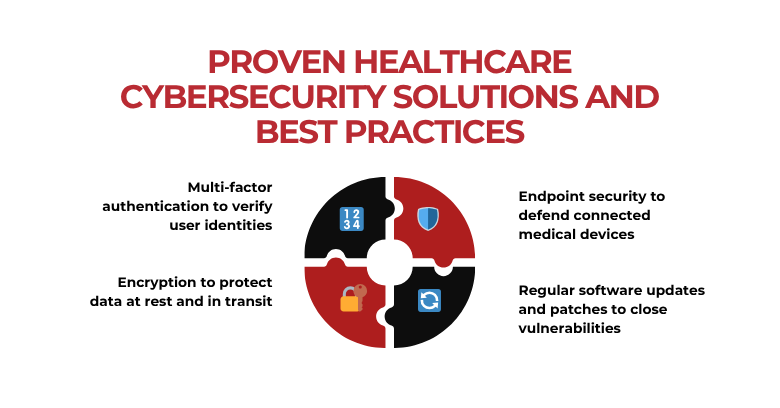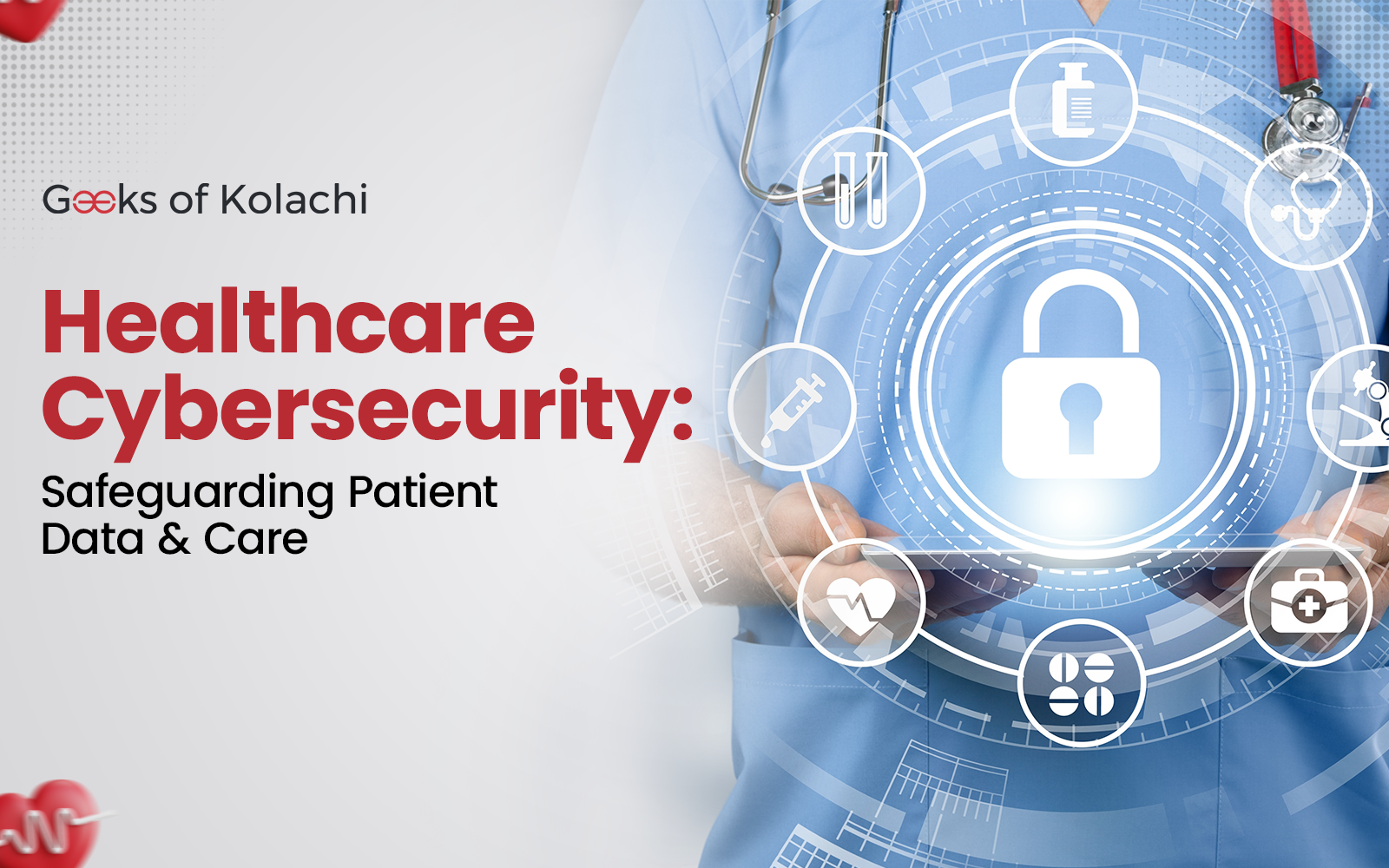In an age where digital technology permeates every facet of healthcare, healthcare cybersecurity has emerged as a critical concern. Hospitals and healthcare providers rely heavily on data-driven insights from clinical analytics to enhance patient care, but the protection of this sensitive data is paramount. As cyber threats grow more sophisticated, securing patient information and medical systems is no longer optional—it’s essential to safeguard patient safety, privacy, and clinical outcomes.
This blog explores how cybersecurity in healthcare is foundational to the effective use of clinical analytics and why healthcare organizations must prioritize protecting their digital infrastructure to provide the best patient care.
Table of Contents
ToggleWhat is Healthcare Cybersecurity?
Before diving deeper, let’s clarify what is healthcare cybersecurity. It refers to the set of practices, tools, and processes designed to protect healthcare information systems, networks, and devices from cyber threats. This includes securing electronic health records (EHRs), medical devices connected to the Internet of Medical Things (IoMT), and hospital networks.
With the growing adoption of digital health technologies, healthcare information technology security and healthcare network security have become vital components in ensuring that sensitive patient data remains confidential, intact, and available to authorized users only. Failure to protect these digital assets not only risks data breaches but can also disrupt essential medical services. Explore how our tailored healthcare software solutions can help ensure your system’s security and smooth operation. According to Fortinet, healthcare organizations face mounting cybersecurity issues that demand urgent attention and innovative solutions to safeguard patient data and maintain system integrity.
Why Healthcare is a High-Value Target for Cyber Attacks?
Healthcare has become a prime target for cyber criminals due to the richness of patient data. Protected health information (PHI) contains highly sensitive details — social security numbers, medical histories, insurance details — that fetch high prices on the black market. Unlike credit card data, stolen health records can sell for up to ten times more, making the healthcare industry particularly vulnerable to cybersecurity threats in healthcare.
Moreover, healthcare organizations manage complex and often sprawling IT environments, including many connected devices and third-party vendors. This extensive attack surface increases the risk of security breaches.
For example, cybersecurity healthcare incidents such as ransomware attacks can lock medical systems, forcing hospitals to delay treatments and even divert ambulances — jeopardizing patient safety. The 2017 WannaCry attack on the UK’s National Health Service is a stark reminder of how damaging such incidents can be.
Recent research by Dark Reading highlights some of the biggest cyber threats in the healthcare industry today, which include ransomware and the exploitation of IoT vulnerabilities. Understanding these evolving threats is crucial for healthcare organizations to stay ahead of potential risks.
Additionally, as healthcare providers continue to implement new identification and authentication systems, exploring solutions like biometrics in healthcare can provide enhanced patient security and protect sensitive information from unauthorized access.
| Protect Your Patients, Protect Your Legacy In today’s digital healthcare landscape, every piece of patient data represents trust—trust that must never be broken. Cyber threats aren’t just technical issues; they are risks to patient safety, privacy, and your organization’s reputation. Don’t wait for a breach to act. Reach out to our expert team today to build a cybersecurity shield tailored to your unique needs, so you can focus on what truly matters: saving lives and providing exceptional care. |
The Role of Clinical Analytics in Patient Care
Clinical analytics uses healthcare data to uncover patterns, predict patient outcomes, and support evidence-based treatment decisions. However, the accuracy and utility of these insights depend on the security and integrity of the underlying data.
This is where health care security becomes critical. Protecting patient data from unauthorized access or alteration ensures that analytics tools provide reliable information. When clinical analytics platforms operate in a secure environment, healthcare providers can confidently use data to improve diagnoses, tailor treatments, and monitor patient progress in real time.
Combining Cybersecurity and Clinical Analytics: A Strategic Imperative
Integrating cybersecurity for healthcare with clinical analytics is more than just IT best practice — it’s essential for patient safety. Real-time monitoring and threat detection help prevent unauthorized access or tampering of analytics data.
By analyzing network activity and access logs, cybersecurity teams can detect anomalies that signal potential breaches. These insights enable proactive defense measures, reducing downtime and protecting patient data from cyberattacks.
Additionally, hospital cybersecurity efforts must account for the growing use of telehealth services and remote monitoring devices, which introduce new vulnerabilities if not properly secured. To fully leverage these innovations, consider investing in bespoke software development that meets the specific needs of your healthcare environment, as outlined in a recent report by KPMG on cybersecurity considerations for the healthcare sector.
Proven Healthcare Cybersecurity Solutions and Best Practices

Implementing robust healthcare cybersecurity solutions involves layered defenses, including:
- Multi-factor authentication to verify user identities
- Encryption to protect data at rest and in transit
- Endpoint security to defend connected medical devices
- Regular software updates and patches to close vulnerabilities
Compliance with industry regulations like HIPAA is mandatory to maintain security standards. Healthcare organizations often collaborate with specialized healthcare cybersecurity companies to design and implement customized defense strategies that fit their unique infrastructure.
Overcoming Persistent Cybersecurity Issues in Healthcare
Despite advances, many healthcare providers face ongoing cybersecurity issues in healthcare such as legacy systems, resource constraints, and a shortage of skilled professionals.
Demand for cybersecurity healthcare jobs continues to grow as organizations seek experts who can navigate the complex healthcare environment and defend against emerging threats. Beyond hiring, cultivating a security-aware culture where every staff member understands the importance of safeguarding patient data is crucial.
The Importance of Healthcare Cybersecurity for Patient Safety
Patient safety extends beyond medical treatment—it includes protecting patient data from cyber threats. A breach not only exposes sensitive information but may also lead to incorrect or unavailable patient records, directly affecting clinical decisions.
The importance of cybersecurity in healthcare is underscored by strict regulatory frameworks, requiring organizations to implement safeguards that protect electronic PHI and maintain system availability. Healthcare providers must adhere to these regulations to avoid costly fines and reputational damage. New legal developments are shaping the future of HIPAA compliance, making it crucial for healthcare organizations to stay updated with emerging regulations, as detailed in a recent Reuters article.
Emerging Trends: The Future of Healthcare Cybersecurity
The future of healthcare and cybersecurity lies in leveraging innovative technologies like artificial intelligence (AI) and blockchain to enhance security. AI-powered threat detection systems can quickly identify and respond to suspicious activity, while blockchain offers tamper-resistant patient data management.
As IoMT devices become more prevalent, health care security must evolve to include stronger authentication protocols and network segmentation to isolate medical devices from general networks.
Conclusion:
In the digital healthcare era, protecting patient data and clinical systems is not just a technical challenge but a strategic priority. Strong healthcare cybersecurity practices enable the full potential of clinical analytics to improve patient outcomes while safeguarding privacy and safety.
Organizations that invest in security and integrate it deeply into their clinical workflows will be best positioned to face the growing cyber threats and continue delivering high-quality care.
Protect your healthcare organization today with expert healthcare cybersecurity consulting from Geeks of Kolachi. Our tailored solutions help safeguard your clinical data, devices, and networks so you can focus on what matters most—improving patient care.
Contact us now to learn how we can secure your healthcare environment against cyber threats and help you leverage clinical analytics safely and effectively.
| Secure Your Future in Healthcare Your commitment to patient care deserves the strongest protection possible. Healthcare cybersecurity is not just about technology—it’s about safeguarding the hope, health, and lives entrusted to you every day. Let us help you create a secure environment where clinical innovation and patient safety go hand in hand. Connect with us now and take the first step toward peace of mind for your team and patients alike. |
Frequently Asked Questions
What are the most common types of cyberattacks in healthcare?
The most common cyberattacks in healthcare include ransomware attacks that lock systems, phishing scams targeting staff credentials, data breaches exposing patient information, and attacks on connected medical devices. These threats can disrupt care and compromise sensitive data.
How do cyberattacks impact patient safety and hospital operations?
Cyberattacks can cause system outages, delay access to patient records, and disrupt medical devices, leading to delayed treatments, incorrect diagnoses, and overall risks to patient safety and hospital workflows.
What are the key regulatory requirements for healthcare cybersecurity?
Healthcare organizations must comply with regulations like HIPAA, which require protecting patient data through encryption, access controls, regular audits, and timely breach notifications to maintain privacy and security.
How can healthcare organizations protect medical devices from cyber threats?
Protect medical devices by implementing strong authentication, segmenting device networks from general IT networks, regularly updating device software, and conducting vulnerability assessments to prevent unauthorized access.
What are the best practices for securing electronic health records (EHRs)?
Secure EHRs by using multi-factor authentication, encrypting data at rest and in transit, performing frequent security audits, training staff on data privacy, and ensuring compliance with healthcare cybersecurity standards.
What role does artificial intelligence (AI) play in healthcare cybersecurity?
AI enhances cybersecurity by monitoring network activity to detect anomalies and threats in real-time, enabling faster responses to cyberattacks and reducing risks to patient data and hospital systems.
